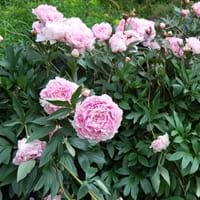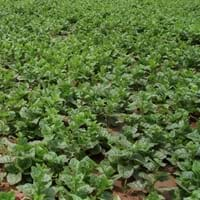Life Span
Perennial
Perennial
Type
Flowering Plants, Shrubs
Vegetable
Origin
Asia, North America, Southern Europe
Southeastern Asia, India
Types
Aristocrat, Buckeye Belle, Henry Bockstoce , Abalone Pearl, Coral Supreme, Cytherea, Charlie's White
Red Malabar Spinach, Green Malabar Spinach
Number of Varieties
Not Available
Habitat
Hillside, Woods
Hot climate regions, Humid climates
USDA Hardiness Zone
3-9
Not Available
Sunset Zone
A3, 1a, 1b, 2a, 2b, 3a, 3b, 4, 5, 6, 7, 8, 9, 10, 11, 12, 13, 14, 15, 16, 17, 18, 19, 20, 22
H1, H2, 3a, 3b, 4, 5, 6, 7, 8, 9, 10, 11, 12, 13, 14, 15, 16, 17, 18, 19, 20, 21, 22, 23, 24
Habit
Clump-Forming
Vining/Climbing
Flower Color
Pink, Red, White
Red, Green, Orange Red
Flower Color Modifier
Not Available
Bicolor
Fruit Color
Not Available
White, Ivory
Leaf Color in Spring
Dark Green
Green, Light Green
Leaf Color in Summer
Dark Green, Green
Green, Dark Green
Leaf Color in Fall
Bronze, Dark Green, Green
Purple, Gray Green
Leaf Color in Winter
Not Available
Purple, Gray Green
Leaf Shape
Compound
Heart-shaped
Plant Season
Spring
Spring, Summer, Fall, Winter
Sunlight
Full Sun, Part sun
Full Sun, Partial Sun, Partial shade
Type of Soil
Loamy
Clay, Loam
The pH of Soil
Neutral
Neutral
Soil Drainage
Well drained
Well drained
Bloom Time
Spring, Summer
Not Available
Tolerances
Not Available
Drought
Where to Plant?
Ground, Pot
Ground
How to Plant?
Grafting, Seedlings, Stem Planting, Transplanting
Leaf Cutting, Seedlings
Plant Maintenance
Medium
Medium
Watering Requirements
Does not require lot of watering, It cannot sustain wet-feet, Keep the ground moist but not water-logged, Needs watering once a week, Prefer drip-irrigation instead of Over-head watering, Water occasionally
Do not let dry out between waterings, Requires consistently moist soil
In Summer
Lots of watering
Average Water
In Spring
Moderate
Moderate
In Winter
Average Water
Average Water
Soil Type
Loamy
Clay, Loam
Soil Drainage Capacity
Well drained
Well drained
Sun Exposure
Full Sun, Part sun
Full Sun, Partial Sun, Partial shade
Pruning
Do not prune during shooting season, Prune to control growth, Remove dead or diseased plant parts, Remove deadheads
Remove damaged leaves, Remove dead leaves
Fertilizers
All-Purpose Liquid Fertilizer
Nitrogen
Pests and Diseases
Botrytis Blight, Leaf spot, Stem spot, Viruses
Aphids
Plant Tolerance
Drought
Drought
Flower Petal Number
Semi-Double
Single
Foliage Texture
Coarse
Medium
Foliage Sheen
Glossy
Glossy
Attracts
Ants
Not Available
Allergy
Not Available
Not Available
Aesthetic Uses
Beautification, Bouquets, Showy Purposes, Used for decorating walls, fences, gates, hedges, etc.
Not Used For Aesthetic Purpose
Beauty Benefits
Not Available
Not Available
Environmental Uses
Air purification
Air purification
Medicinal Uses
Cough, Gout, Headache, Heartburn, Kidney problems, Upset stomach, Urinary tract problems
Folate, Iron, Low calories, Low Fats, Rich in Potassium, ß-carotene, Vitamin A, Vitamin C
Part of Plant Used
Flowers, Root, Seeds
Leaves
Other Uses
Showy Purposes, Used as Ornamental plant, Used for fragrance
Used As Food
Used As Indoor Plant
No
No
Used As Outdoor Plant
Yes
Yes
Garden Design
Feature Plant, Foundation, Mixed Border
Container, Edible, Groundcover, Herb / Vegetable, Tropical, Vine
Botanical Name
Paeonia lactiflora
BASELLA alba
Common Name
Herbaceous Peony
Ceylon Spinach, Malabar Spinach, Red Malabar Spinach
In Hindi
Herbaceous peony
पोई
In German
Krautige Pfingstrose
Malabarspinat
In French
pivoines herbacées
L’épinard de Malabar
In Spanish
peonía herbáceas
espinaca de Malabar
In Greek
ποώδη παιωνία
Malabar Σπανάκι
In Portuguese
peônia herbáceas
Malabar espinafre
In Polish
piwonii zielnych
Szpinak Malabar
In Latin
herbaceum AGLAOPHOTIS
Spinach Malabar
Phylum
Magnoliophyta
Magnoliophyta
Class
Magnoliopsida
Eudicotyledones
Order
Not Available
Caryophyllales
Family
Paeoniaceae
Basellaceae
Clade
Angiosperms, Core eudicots, Eudicots
Angiosperms, Core eudicots, Eudicots
Tribe
Not Available
Not Available
Subfamily
Not Available
Not Available
Number of Species
Not Available
Season and Care of Chinese Peony and Malabar Spinach
Season and care of Chinese Peony and Malabar Spinach is important to know. While considering everything about Chinese Peony and Malabar Spinach Care, growing season is an essential factor. Chinese Peony season is Spring and Malabar Spinach season is Spring. The type of soil for Chinese Peony is Loamy and for Malabar Spinach is Clay, Loam while the PH of soil for Chinese Peony is Neutral and for Malabar Spinach is Neutral.
Chinese Peony and Malabar Spinach Physical Information
Chinese Peony and Malabar Spinach physical information is very important for comparison. Chinese Peony height is 76.00 cm and width 76.00 cm whereas Malabar Spinach height is 2.40 cm and width 24.00 cm. The color specification of Chinese Peony and Malabar Spinach are as follows:
Chinese Peony flower color: Pink, Red and White
Chinese Peony leaf color: Dark Green
Malabar Spinach flower color: Red, Green and Orange Red
- Malabar Spinach leaf color: Green and Light Green
Care of Chinese Peony and Malabar Spinach
Care of Chinese Peony and Malabar Spinach include pruning, fertilizers, watering etc. Chinese Peony pruning is done Do not prune during shooting season, Prune to control growth, Remove dead or diseased plant parts and Remove deadheads and Malabar Spinach pruning is done Remove damaged leaves and Remove dead leaves. In summer Chinese Peony needs Lots of watering and in winter, it needs Average Water. Whereas, in summer Malabar Spinach needs Average Water and in winter, it needs Average Water.





